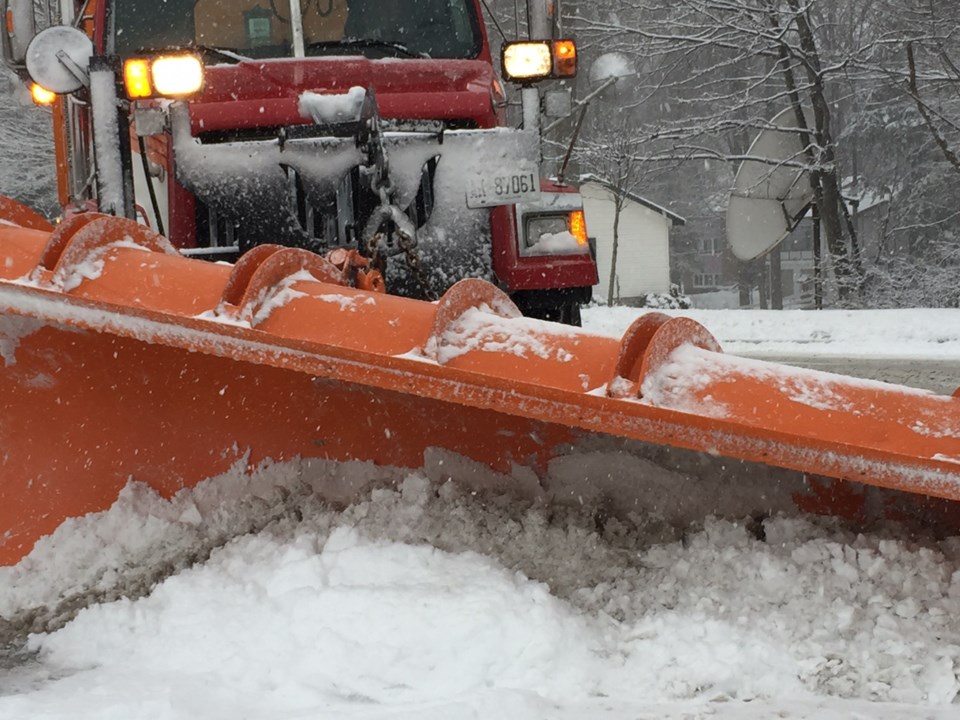A report on the costs of improving sidewalk and other snow-plowing services is due in August, members of Greater Sudbury's operations committee were told Monday.
Councillors were reviewing the results of last year's snow removal budget, which came in at $12,526,024, almost $1.8 million more than forecast.
That was largely the result of bad weather in the first four months of 2016, when the city received around 303 centimetres of snow, almost double what usually falls. The toughest month weather-wise was February, when 117 cm of snow fell, compared to the normal, 30-year average of 52 cm. April saw 55 cm of snow, compared to the normal 17 cm.
That prompted a question from Ward 11 Coun. Lynne Reynolds, who wondered why more snow automatically means higher costs.
“Even though we had a lot of snow, I'm not sure we had more incidents,” Reynolds said. “If we get 15 centimetres instead of 10, shouldn't the cost be the same?”
Infrastructure GM Tony Cecutti said the snowplowing budget is protected by a reserve fund that is replenished in years when we get less snow. Budget estimates are made based on a five-year rolling average. So while the figures look bad this year, “over time, it should even out.”
“In 2015, it was relatively mild, and we underspent in 2015,” Cecutti said. “We try to keep the reserves healthy (but) we do what we need to do to keep the community working.”
Roads director David Shelsted said the reason more snow means higher costs is related to the city's approach to plowing. Crews are called out when eight centimetres have fallen.
If snow keeps falling, crews have to keep plowing.
“Depending on how long the storm lasts, we may have to do that route twice,” Shelsted said.
And more snow leads to other challenges. For example, sidewalk snow plows have to be equipped with a snow blower attachment when snowfall amounts exceed certain levels. That takes more time, driving up costs.
“And the more snow we get, the more likely road lanes will be narrowed,” he said, which requires more plowing.
In response to a question about why plows always follow the same routes, regardless of where the snow is following, Shelsted said there are a few reasons.
For one, plows always have to make right turns because of the position of the blades, so the route is designed for that. And having the same “beat” each time out allows drivers to get familiar with the ins and outs of plowing an area.
Ward 12 Coun. Joscelyne Landry-Altmann, who frequently advocates for more sidewalk plowing and improved access to bus shelters, asked whether more will be spent on sidewalks next year.
“Should we anticipate a larger budget?” she asked.
“That's something you will tell me,” Cecutti said.
A report is coming in August that will deal with changing service levels, as well as the costs. He said finding the money will be key.
“It's been a challenge to find financing to do more winter maintenance,” he said. “But there's always that option for council to consider improvements to sidewalk maintenance. We'll be ready to implement that.”
